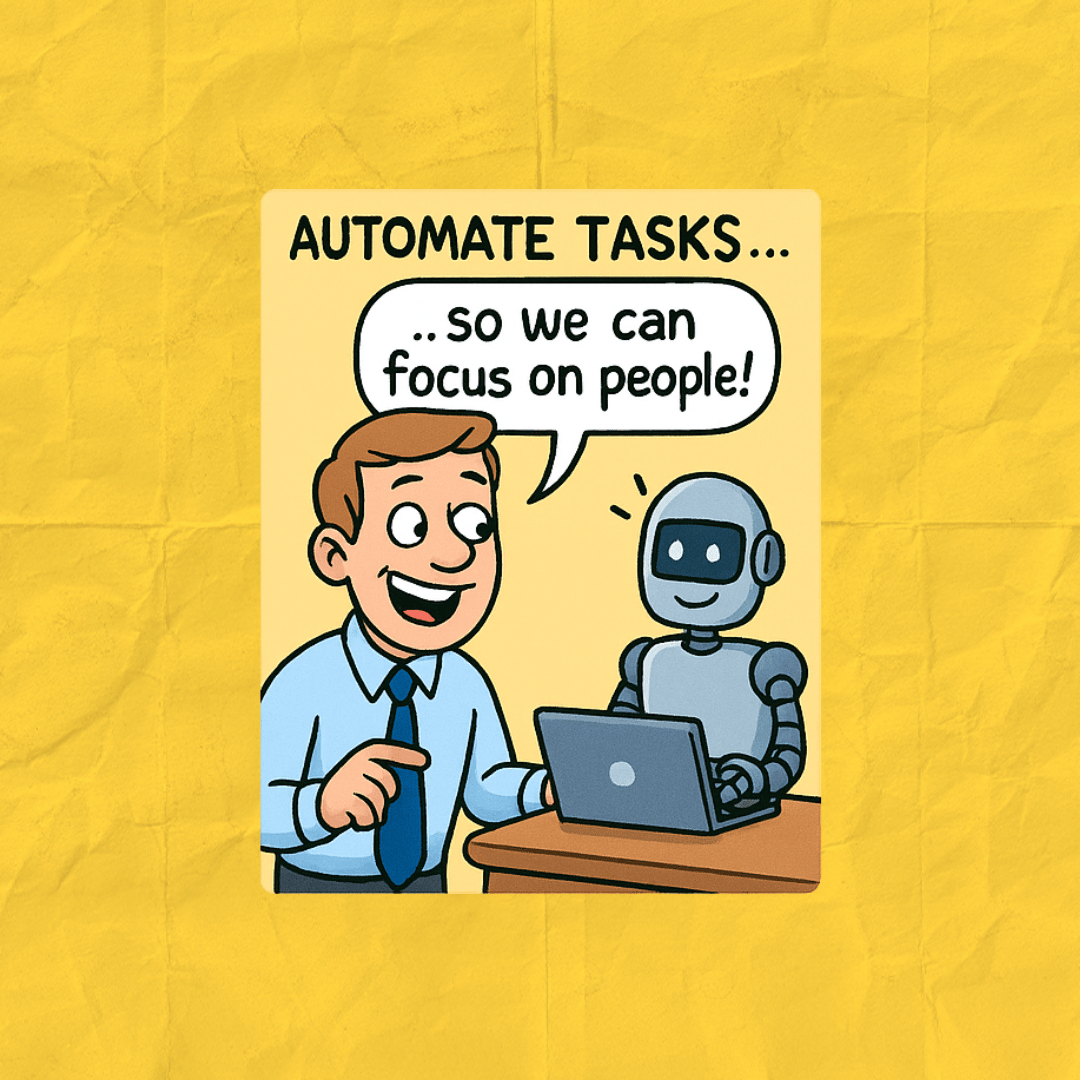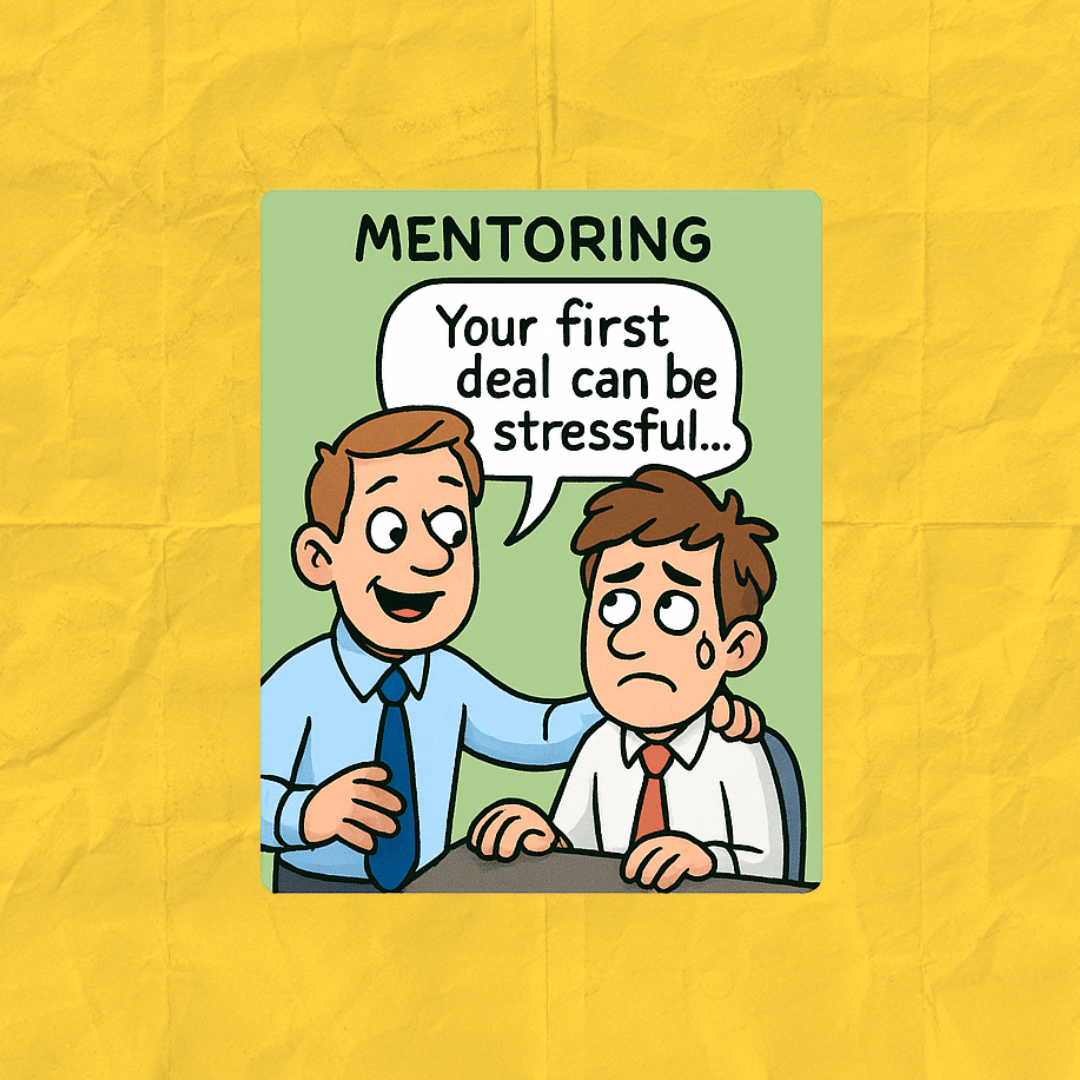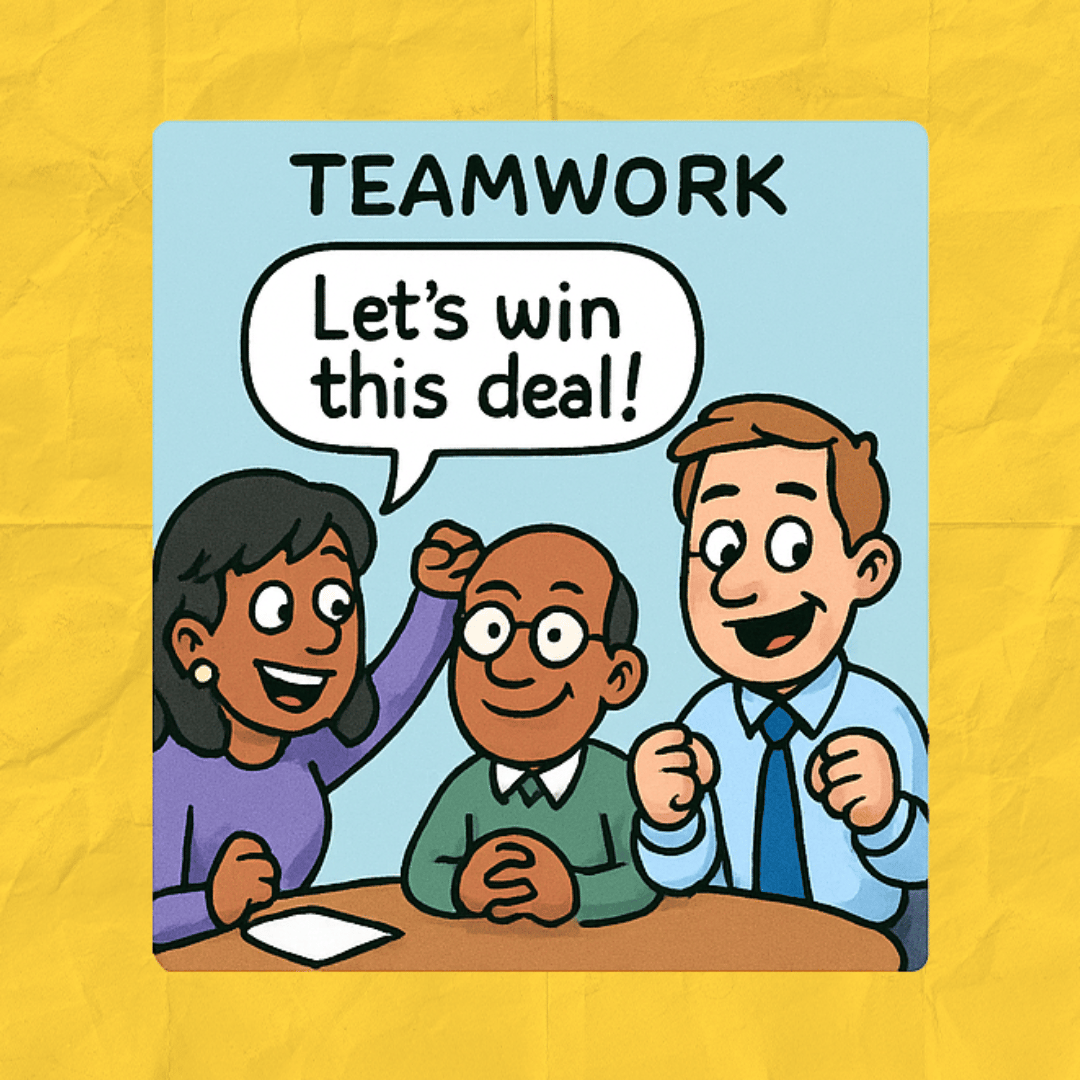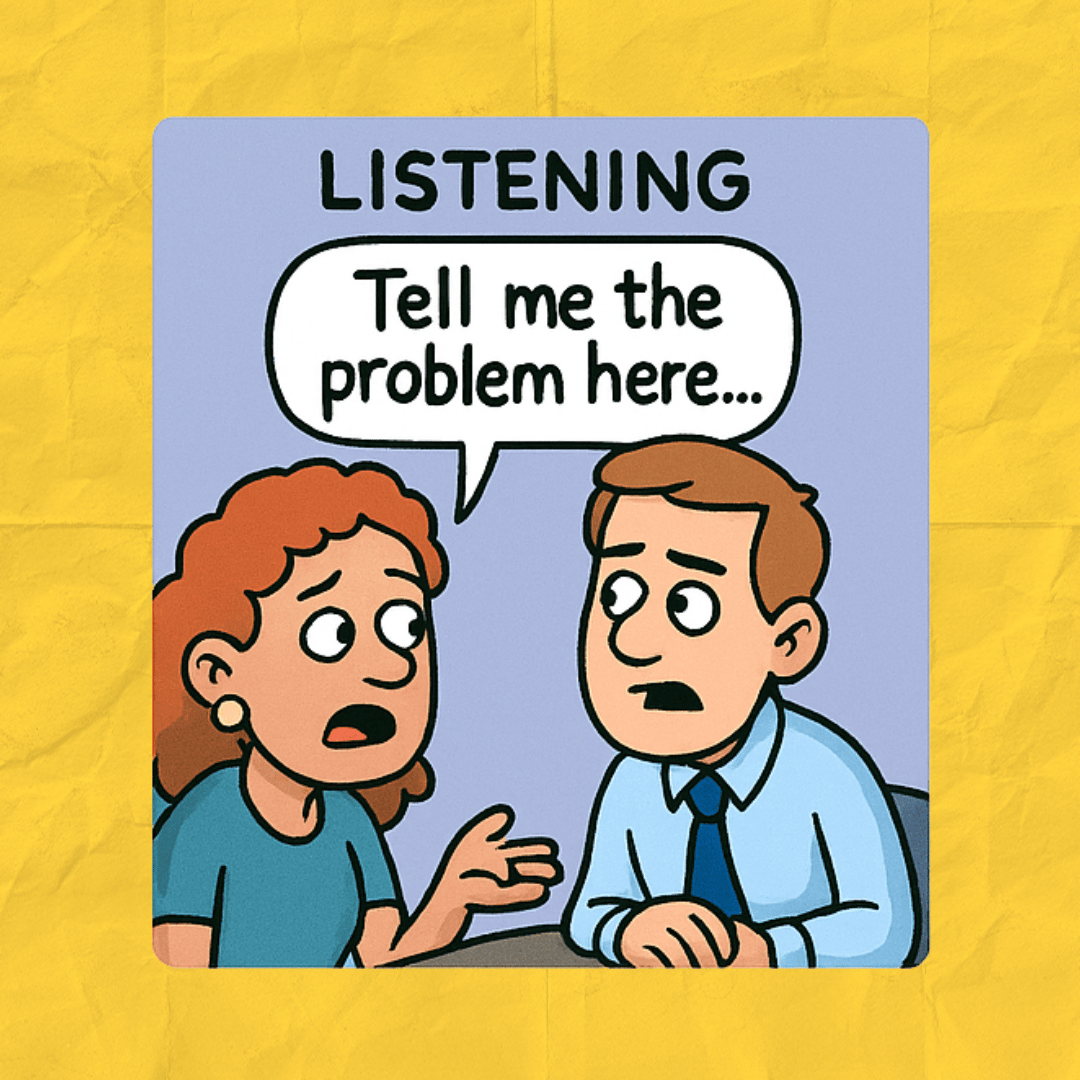- the Weekly Invoice
- Posts
- Nurture the Human Edge
Nurture the Human Edge
Succeed in the age of AI with a focus on creating unique culture where humanity wins.
Let’s cut to the chase: AI is crushing busywork, automating mindless admin, and making “processing” cheaper than ever. But as the tech stacks pile up, the companies pulling away aren’t the ones with more bots—they’re the ones pouring into their people. If you want to win in 2025, double down on your leaders, your culture, and every ounce of humanity inside your team. Because what’s rare—and most valuable—right now? Empathy, trust, creativity, and connection.
There’s a lot of noise about how AI is replacing jobs, making teams leaner, “disrupting” entire industries. But here’s the real headline for founders, owners, and operators: The more tech takes over the busywork, the more priceless your people become. It’s never been easier to save hours with automation—and never more dangerous to neglect the stuff only humans bring to the table: culture, leadership, trust, and connection.
Forget HR. This is about people, performance, and the kind of company you want to run.
Leadership and Culture in the Age of Smart Machines
Let’s look at what’s really changed. Today, you can run payroll, onboard clients, manage vacation, or chase down receipts with barely any human touch. Tools like Gusto, Rippling, Deel, and even AI-powered assistants like Perplexity can handle back-office tasks in minutes. According to a recent Gartner survey, more than 70% of small businesses have already automated at least one “people ops” process—those mindless forms, status checks, and reminders that used to clog up your day.
So what’s left?
Answering a worried customer’s tricky question
Mentoring a rising employee through their first big deal
Finding team consensus on a tough call
Spotting a brewing conflict before it tanks morale
AI can’t do any of it. When every competitor has the same access to smart tools, the companies that win are the ones who double down on human advantage—the chemistry, creativity, emotional intelligence, and alignment that can’t be packaged into an app.

Quick Stat
“Companies that invest in coaching, communication, and cultural rituals see 27% higher retention—and 31% better NPS scores, even as they automate routine work.”
(McKinsey, 2025)
Tight-Knit Teams Beat the Gig Economy
Remember when everyone wanted “flexible” teams—freelancers on speed-dial, project-based labor, global pools of part-timers? That made sense when growth was about moving a mountain of tickets. But now, AI tools chew through those tasks instantly and cheaply. What can’t be replaced?
Strong, well-trained, deeply connected teams.
If every business can automate away “widget work,” what sets you apart is the stuff that isn’t transactional:
Trust: High-functioning teams spot problems fast—and fix them before customers ever notice.
Speed: Teams that know each other ship faster and pivot smarter because everyone shares context and ownership.
Innovation: New ideas and breakthroughs come from bumping up against diverse brains and confident debate—not just slinging tasks in Slack.
The gig model, once built for efficiency, starts to break down: less loyalty, more churn, and a race to the bottom for price. In contrast, businesses investing in company culture, coaching, and trust see churn plummet and performance soar.

Real World
Look at companies like Basecamp or Notion—smaller teams with tight mission buy-in vastly outperforming much bigger groups with scattered focus. It’s not about how many Zoom faces you can tile onto a call. It’s how much each person actually cares and feels part of something bigger.
Skills That Can’t Be Bottled—Making Empathy and Listening Your Secret Weapon
AI might surface the “what,” but it never answers the “why” or the “how best?”:
Listening to a client vent about frustrations, then reflecting back real understanding
Coaching someone through a challenge, role-playing objections, or brainstorming new ideas
Building a team meeting that actually builds team—not just reviews numbers, but creates space for wins, questions, and honest talk
These skills can’t be A/B tested by an algorithm. But they can be learned, coached, and celebrated.
And with AI lifting the grunt work, you finally have time for them.

Key Move: Make Human Moments a Ritual
Best-in-class teams don’t leave culture and connection to chance. They intentionally:
Schedule regular check-ins about the team, not just the work.
Put real money and time into onboarding and mentorship, not “just another video call.”
Celebrate people—catching a great client save, teamwork or courage, not just sales numbers.
When to Automate—and When to Invest in People
Here’s a simple rule of thumb:
Automate everything you can—so you can invest in what only humans can do.
Use AI for onboarding forms, data collection, scheduling, and follow-up reminders (that’s time you’ll never get back manually!).
Free up your best people for 1:1 coaching, deal reviews, interviewing new hires, or debriefing with customers after a win or loss.
Don’t try to automate trust, learning, problem-solving, or real accountability—they’re your highest ROI investments.
The result? Teams with space to actually learn and care about each other and your clients. The payback: higher retention, less burnout, and teams that want to run through brick walls for the mission.
Operator Playbook: Building the “People Advantage” in the Age of Automation
Re-Think Your Hiring Filter:
Start putting more emphasis on traits like curiosity, grit, communication, and collaboration. Ask interview questions like, “Tell me about a time you helped a teammate through a tough spot.” Technical skills are easier to upskill—core values aren’t.Make Learning a Core Value:
Don’t just run training during onboarding. Create bite-sized, ongoing sessions to share customer stories, what worked/what didn’t, and even celebrate “lessons learned” from failures.Coach for Connection:
Encourage managers to regularly ask, “What’s getting in your way?” and “What can I unblock or clarify?” Quiet problems wreck productivity; open conversation builds real loyalty.Automate for Elevation, Not Elimination:
Let AI take on the boring, repetitive, and compliance-type work—so your team can focus on strategy, partnership, and building the business.Keep the Culture Alive Remotely:
Whether in-person or distributed, carve out rituals: virtual coffee hours, “peak & pit” rounds (share a win and a struggle), or lightning talks on non-work passions. Strong culture happens by design, not default.

The Gig Economy Shift
Everyone’s heard stories: a company cycles through ten contractors who are “efficient” but have no skin in the game—versus a core team who loops each other in, flags problems before they explode, and pulls together when the market zigs. Tools are a force multiplier for teams—not a substitute for trust.
Now that AI can automate the lowest-value work, you’ll find that well-knit, bought-in teams are your new moat. Pay attention to the unseen stuff: how people feel, how they talk about work, and how you reward not just big wins, but quiet teamwork.
Smart Questions to Ask in Leadership Meetings
How do our best people feel about working here? (Not just “engaged”—but safe enough to share, challenge, and innovate?)
Where do we spend time and money on our people—and where are we hoping tech will do it all?
What did we learn about our team this month that will help us do better next quarter?
What the Best Teams Are Doing Right Now
Replacing annual “reviews” with quarterly feedforward sessions (“What do you need to go faster, feel better, achieve more?”).
Creating feedback loops that work both ways: employees share with leaders, and leaders share what they’re learning with the company.
Building culture by design—identifying what behaviors and attitudes really matter, then sharing and celebrating them weekly.
Examples
Notion runs monthly “show and tell” sessions for wins, fails, and peer shoutouts—not just performance dashboards.
Basecamp prioritizes few, high-impact projects and makes sure every team member can point to how their work moves the mission forward.
Early-stage SaaS teams implementing robust onboarding and regular check-ins find that even part-time staff are all-in on the company’s purpose.

The Payoff: Culture as Your Competitive Edge
What’s happening now is more than just swapping paperwork for pixels. The businesses that will thrive see automation as fuel for deeper connection, better people, and a team that doesn’t just “execute” but wants to win together.
Retaining great people isn’t just about higher pay or more perks. It’s about building a place where people are known, seen, and encouraged to grow. When your team trusts each other—and you—everything else (from innovation to retention to hitting targets) gets easier.
Final Takeaway
Tech is your engine, but culture is your driver. Use AI to clear the drudge work, but put your real investments into leadership, teamwork, and the messy, beautiful, creative parts of running your business.
The real advantage in 2025 isn’t having the smartest tech stack—it’s building a team that cares, listens, adapts, and acts with conviction. That’s what gets you through market shifts, up against the Goliaths, and in front of the best customers.
What’s working for your team? What rituals or ideas have helped you keep the “human” edge as AI takes over the busywork? Hit reply—I’d love to feature your story in an upcoming newsletter.
Stay sharp, be human, and let automation clear the path—so your people can run faster and farther together.
-Grady